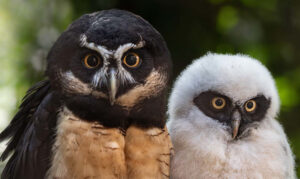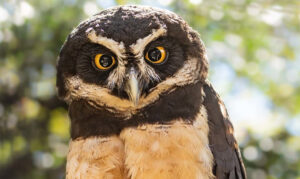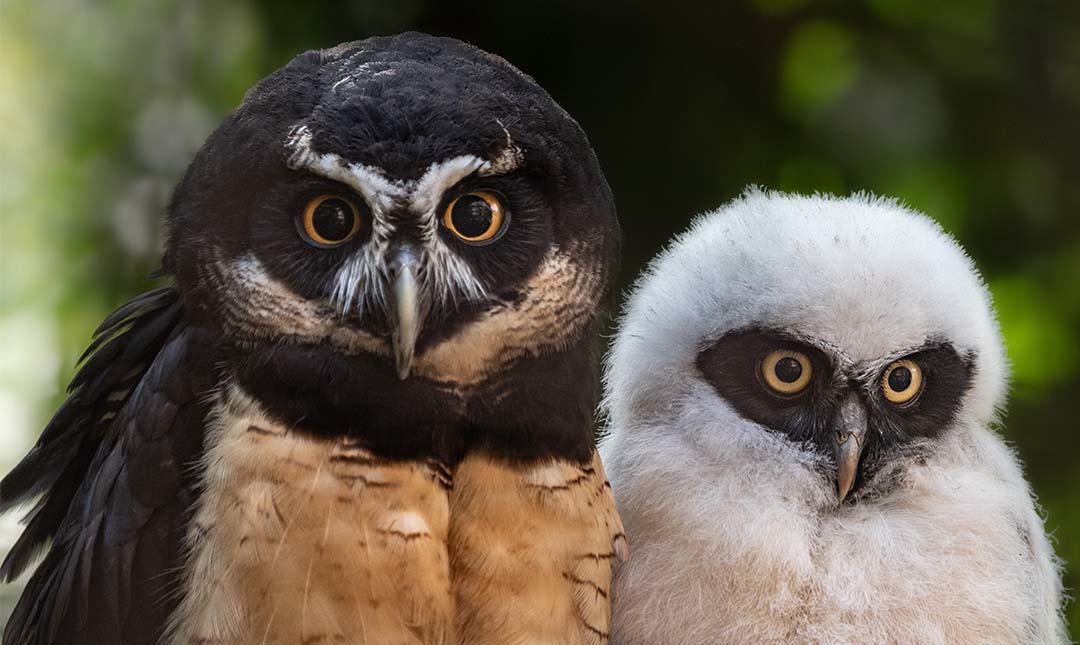About
This owl is named for the ring of white feathers around its eyes that resemble a pair of glasses or spectacles. Owls are the nocturnal counterparts of hawks and falcons that hunt by day. Owls have large, fixed eyes that only face forward. They use their very flexible necks to rotate their head 270 degrees, enabling them to see objects to either side or behind them. An owl’s binocular vision provides better depth perception than many other birds have. To increase the accuracy of depth perception, owls bob their head and move it side to side. Owls have excellent vision in low-light conditions. Large pupils allow them to see images almost three times as bright as the human eye can see in darkness, but their ability to see color is limited.
Owls live in dense forests where visual communication is difficult, so they rely heavily on vocal communication. Calls are used primarily to show alarm, attract mates, and advertise territorial boundaries for nesting sites. The spectacled owl’s vocalizations include a gruff BU-HU-HU, a descending whistle call, and a series of six to eight low, resonant hoots with a slight popping quality—like the tapping of a woodpecker.
Acute hearing is vital for owls because they hunt at night. A disk of feathers around each eye acts as a funnel to channel noises towards the ears. Asymmetrical ear openings and a broad skull help triangulate the location of the sound. Their beaks are curved downward to minimize interference with sound or vision. Spectacled owls are sit-and-wait ambush hunters. They are equipped with short, powerful legs and feet with sharp, curved talons for gripping prey. Owl feathers have a frayed edge that muffles sound and allows them to fly almost noiselessly to capture prey.
Unlike most other birds of prey, owls don’t have a crop in which to store food. Food is retained in the stomach and gizzard for three to 13 hours, and then indigestible remains, such as bones, fur, teeth, and claws, are regurgitated as compact pellets. These pellets provide a good record of what the owl has eaten.


Habitat
The spectacled owl has an extremely large range from southern Mexico to northern Argentina. This owl is typically found in dense, tropical forests, forest edges, savanna woodlands, dry forests, and plantations.
Diet
Carnivorous. Prey includes ground-living rodents and other small mammals up to the size of opossums; frogs; lizards; and large insects; as well as some birds and bats. It also hunts near forested streams for crawfish and land crabs.
Physical characteristics
Body length: up to 20 inches. Weight: 21 to 36 ounces. Lifespan in the wild averages six years. In human care, they can live 20 years or longer.
Location Within the Zoo
You’ll find this animal in the South America section. See Zoo Map.


